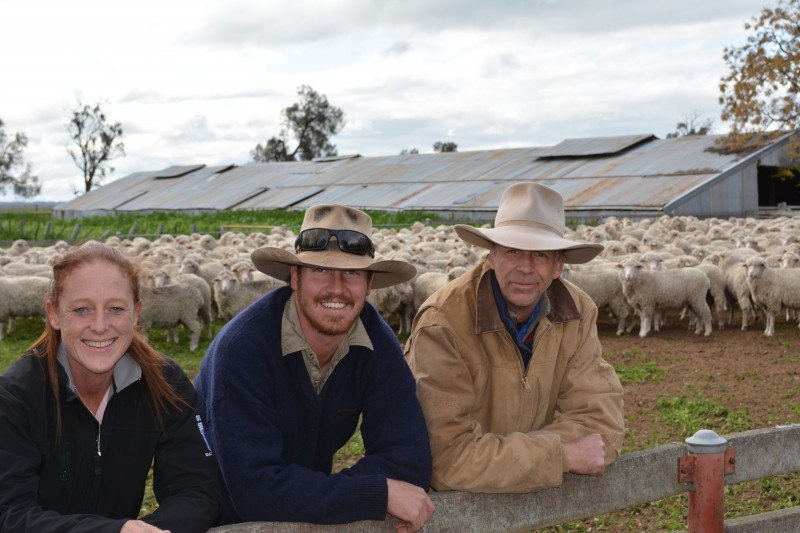Coonong backs Dohne decision
BY SIMONE NORRIE / STOCK & LAND / 27th August 2015
AT COONONG Station near Urana in southern NSW, Tom and Sophie Holt are running one of Australia’s largest commercial Dohne operations.
Along with their son Thomas, 8, their full time employee Gary Fox (who has worked at Coonong for over 30 years), and their nephew Toby Ellis, they manage 32,000 sheep including 14,000 breeding ewes.
Mr Ellis manages Coolbaroo near Jerilderie, NSW – just one arm of the operation that spans a total of 26,710 hectares in the Urana region.
Dohnes flourishes in the grasslands environment and survive dry times, Mr Holt said.“They make money over other breeds because of the minimal input – it’s the dollars you can save that makes
the difference,” he said. “They’re not a selective grazer; you can have a lucerne stand and a Paterson’s Curse and more often than not they’ll hit the weed.“Their doing ability is phenomenal.”
The station is considered to be the start of the Hay plains, with a low annual rainfall, flat terrain and native grasslands.
In 2004, the Holt’s sourced a Dohne sire pack from Western Australia and started to cross the breed with their existing Merino flock, with the long term objective of running a pure Dohne mob – a goal that
should be achieved by 2018.
“Because Dohnes were such a small entity we looked for type; we like a big long stretchy ram, and we mainly needed the structure to be right as we had the wool
genetics coming through from the Merino side,” Mr Holt said.
Just over a decade on, and chasing carcase traits has paid off.
Over time they had introduced additional Dohne genetics to the flock, and their main bloodline was now DD Dohnes, from Moama,NSW.
Along with producing a lean, high yielding carcase, the natural fertility of the breed was a standout trait, Mr Holt said. Lambing well
– and cycling year round – were characteristics that went with the Dohne territory,he said.
This year they’ve seen their lambing percentage – including maidens – climb to an impressive 124 per cent unscanned.
“With that lambing percentage we can get very precise; you can class at 50pc instead of 30pc so you can really tighten up your mob,” Mr Holt said.
They are run on all native pastures and some were supplementary fed for 90 days to ensure they hit the 45 kilogram [liveweight] bracket.
“We aim for the medium domestic type lamb, so around a 22kg carcase, but more often than not we haven’t given them any special treatment,” Mr Holt said.
At classing they retained one third of their ewes and the rest were moved to the other farm and joined to a terminal sire. Breeders with a short staple length or a visual fault were culled.
“Having a consistent and experienced classer is really important to us so we use Jason Southwell who is fantastic,” Mr Holt said.
“We put a White Suffolk ram over some of the Dohne ewes to capitalise on the lamb market; and our cast for age breeders will also be taken over to Coolbaroo for a year to get another lamb out of them.”
While they didn’t aim for a particular market, the Holts keep a close eye on over-the-hooks contracts and also sell through the saleyards, normally at Bendigo.
Photo courtesy of Fairfax Agricultural Media











 Facebook
Facebook YouTube
YouTube Instagram
Instagram